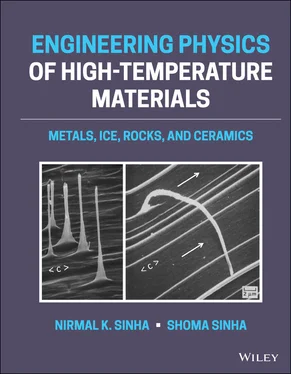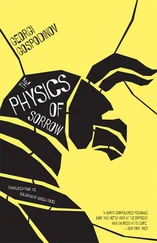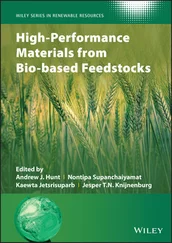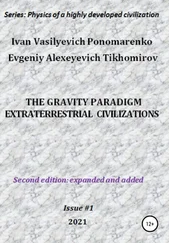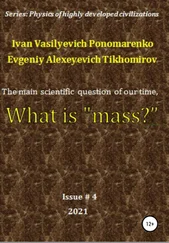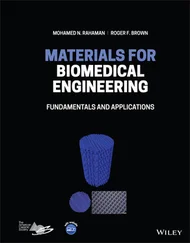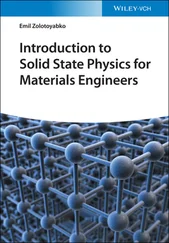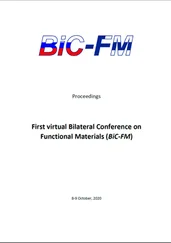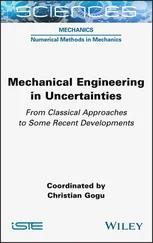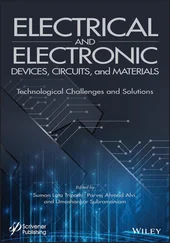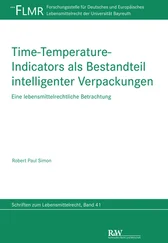Nirmal K. Sinha - Engineering Physics of High-Temperature Materials
Здесь есть возможность читать онлайн «Nirmal K. Sinha - Engineering Physics of High-Temperature Materials» — ознакомительный отрывок электронной книги совершенно бесплатно, а после прочтения отрывка купить полную версию. В некоторых случаях можно слушать аудио, скачать через торрент в формате fb2 и присутствует краткое содержание. Жанр: unrecognised, на английском языке. Описание произведения, (предисловие) а так же отзывы посетителей доступны на портале библиотеки ЛибКат.
- Название:Engineering Physics of High-Temperature Materials
- Автор:
- Жанр:
- Год:неизвестен
- ISBN:нет данных
- Рейтинг книги:3 / 5. Голосов: 1
-
Избранное:Добавить в избранное
- Отзывы:
-
Ваша оценка:
- 60
- 1
- 2
- 3
- 4
- 5
Engineering Physics of High-Temperature Materials: краткое содержание, описание и аннотация
Предлагаем к чтению аннотацию, описание, краткое содержание или предисловие (зависит от того, что написал сам автор книги «Engineering Physics of High-Temperature Materials»). Если вы не нашли необходимую информацию о книге — напишите в комментариях, мы постараемся отыскать её.
Discover a comprehensive exploration of high temperature materials written by leading materials scientists Engineering Physics of High-Temperature Materials: Metals, Ice, Rocks, and Ceramics
Engineering Physics of High-Temperature Materials (EPHTM)
Engineering Physics of High-Temperature Materials
Engineering Physics of High-Temperature Materials: Metals, Ice, Rocks, and Ceramics
Engineering Physics of High-Temperature Materials — читать онлайн ознакомительный отрывок
Ниже представлен текст книги, разбитый по страницам. Система сохранения места последней прочитанной страницы, позволяет с удобством читать онлайн бесплатно книгу «Engineering Physics of High-Temperature Materials», без необходимости каждый раз заново искать на чём Вы остановились. Поставьте закладку, и сможете в любой момент перейти на страницу, на которой закончили чтение.
Интервал:
Закладка:
Limit of Liability/Disclaimer of Warranty While the publisher and the authors have used their best efforts in preparing this work, they make no representations or warranties with respect to the accuracy or completeness of the contents of this work and specifically disclaim all warranties, including without limitation any implied warranties of merchantability or fitness for a particular purpose. No warranty may be created or extended by sales representatives, written sales materials, or promotional statements for this work. The fact that an organization, website, or product is referred to in this work as a citation and/or potential source of further information does not mean that the publisher and the authors endorse the information or services the organization, website, or product may provide or recommendations it may make. This work is sold with the understanding that the publisher is not engaged in rendering professional services. The advice and strategies contained herein may not be suitable for your situation. You should consult with a specialist where appropriate. Further, readers should be aware that websites listed in this work may have changed or disappeared between when this work was written and when it is read. Neither the publisher nor the authors shall be liable for any loss of profit or any other commercial damages, including, but not limited to, special, incidental, consequential, or other damages.
Library of Congress Cataloging‐in‐Publication Data
Names: Sinha, Nirmal K. (Engineer), author. | Sinha, Shoma, author.
Title: Engineering physics of high-temperature materials : metals, ice, rocks, and ceramics / Nirmal K. Sinha and Shoma Sinha.
Description: Hoboken, NJ : Wiley, 2022. | Includes bibliographical references and index.
Identifiers: LCCN 2021027147 (print) | LCCN 2021027148 (ebook) | ISBN 9781119420484 (cloth) | ISBN 9781119420453 (adobe pdf) | ISBN 9781119420460 (epub)
Subjects: LCSH: Materials at high temperatures. | Deformations (Mechanics)
Classification: LCC TA418.24 .S56 2021 (print) | LCC TA418.24 (ebook) | DDC 620.1/1217–dc23
LC record available at https://lccn.loc.gov/2021027147LC ebook record available at https://lccn.loc.gov/2021027148
Cover Design: Wiley
Cover Image: © Nirmal K. Sinha
The authors would like to dedicate this book to their loving grandson and nephew, Indro Neel Sinha. The proposal of this book was accepted by Wiley on the day he was born in December 2016.
Acknowledgments
Both authors would like to acknowledge the patience and support of their entire family – particularly Supti Sinha, Priya Sinha, and Roona Sinha. Without them, this work would not have been possible.
Nirmal Sinha: I am indebted to Dr. Arthur Carty, the then President of National Research Council (NRC) of Canada, for providing the opportunity and necessary funds in 1998 to build the required facilities within the Institute for Aerospace Research (IAR) of NRC for carrying out ice‐based mechanical tests on various gas‐turbine engine materials, relevant to this book and without which this book would not have been written. For about three decades prior to this, I had been encouraging materials scientists around the world to extend glass‐ and ice‐based constitutive equations to high‐temperature metallic alloys, but progress was limited until this opportunity.
This book presents progressive development that started from working on glass technology. The late Dr. Sydney Bateson (Director) and J.W. Hunt (Manager) of Glass and Ceramics Laboratory, Duplate Canada Ltd. (Oshawa, Canada), mentored, inspired and provided me with the freedom during 1964–1971 to conduct studies related to thermal tempering and strength improvement of window glasses. Duplate (acquired by Pittsburg Plate Glass), sole supplier to all the automobiles manufacturers in Canada (General Motors, Ford, and Chrysler), also allowed me to fulfil the requirements for my doctoral studies during 1967–1970 at the University of Waterloo. D. Tansley assisted me in designing and fabricating tempering and creep equipment in the laboratory at Duplate. A large number of persons, including C. McKnight in the manufacturing plant at Duplate, exposed me to the production problems and real‐life issues in making automotive and structural safety glasses. Dr. K.M Baird of the Physics Division of NRC allowed me to borrow the first Canadian He–Ne gas LASER, which he had fabricated, for my rheo‐optical studies on the tempering of glass, especially for the development of the scattered light technique for determining stresses in thermally toughened glass sheets. Dr. J.C. Thompson of the University of Waterloo helped me immensely in the preparation of my PhD thesis.
I am also indebted to the late Dr. Lorne Gold at the Division of Building Research (DBR) of NRC for the endless discussions, critical comments, and supply of his original experimental data on microcracking in pure ice, which enhanced the EDEV model for broad applications. The technical help of D. Wright, R. Jerome, and J. Neal for the years at the ice mechanics laboratory of DBR (NRC) is much appreciated. For the studies on superalloys at IAR (NRC), I am indebted to T. Terada, R.C. McKellar, and R. Kearsey for their excellent technical assistance, and to Dr. W. Wallace for the metallurgical discussions.
Prof. Brian Wilshire inspired me, in a very positive manner, to challenge many ideas popular in the high‐temperature mechanics of metals and alloys that are also followed, often without question, in other materials science areas. It became an obsession to apply ice‐based mechanics to metallic and other materials. This book may therefore be considered as complimentary to Creep of Metals and Alloys (Institute of Metals, 1985) by R.W. Evans and B. Wilshire.
For two decades of field observations at the world’s largest skating rink (Rideau Canal Skateway, Ottawa, 7.8 km), and the experiments on the loading of floating ice described in Chapter 10, relevant to postglacial or global isostatic uplifting, I would like to acknowledge the technical help provided by D. Martin and his survey team, Design Division, Maintenance Division – Operations Group, and the Winterlude staff of the National Capital Commission (NCC) at Ottawa, including A.J. Capling, A.S. Fraser, M. Gauthier, and K. Tam.
Last, but most important, I am indebted to the Inuit communities of Pond Inlet (Baffin Island) for sharing their knowledge on sea ice as a material, and to various agencies of the Federal Government of Canada, namely Canadian Coast Guard (CCG), Atmospheric Environment Services (AES), Natural Resources Canada (NRCan), and the Canadian Armed Forces, for the logistical support in the High Arctic over a period of 30 years.
Shoma Sinha: Throughout my career, I have had the privilege to be supported and guided by many. Jeff Fraser from the NRC (Institute of Microstructural Sciences) not only kindled my interest in the fascinating world of materials and microscopy but his encouragement also gave me the confidence to pursue my interests. My doctoral research supervisor, Dr. Robert Wolkow, taught me to explore nature with a multi‐disciplinary mindset. Dr. Gino DiLabio has helped guide me in critical thinking and planning – in both my research and overall career. I am also indebted to other members of my doctoral research team, including but not limited to, Dr. Stanislav Dogel, Dr. Jason Pitters, and Mark Salomans. The teams at Quantiam Technologies Inc., the Government of Alberta – Emerging Technology Industries and Queen's Partnerships and Innovation have further enabled me to explore and contribute to the multidisciplinary world of science and innovation.
My career would not be where it is today without the many amazing individuals who I know I can always rely on to be there with advice, mentorship, and friendship. The brilliant “brunch‐ladies” and my co‐founders of the WISER (Women in Science, Engineering and Research) Network – Gail Powley, Dr. Sharon Barker, and Dr. Heather Kaminsky – have created an amazing circle of support. I would also particularly like to acknowledge Heidi Au, Katherine Comber, Annette Dethlefsen, Mary‐Ann LaFrance, Saurabh Ratti, Samia Sarkar, Emina Veletanlic, and Dr. David Waldbillig for always being there for me.
Читать дальшеИнтервал:
Закладка:
Похожие книги на «Engineering Physics of High-Temperature Materials»
Представляем Вашему вниманию похожие книги на «Engineering Physics of High-Temperature Materials» списком для выбора. Мы отобрали схожую по названию и смыслу литературу в надежде предоставить читателям больше вариантов отыскать новые, интересные, ещё непрочитанные произведения.
Обсуждение, отзывы о книге «Engineering Physics of High-Temperature Materials» и просто собственные мнения читателей. Оставьте ваши комментарии, напишите, что Вы думаете о произведении, его смысле или главных героях. Укажите что конкретно понравилось, а что нет, и почему Вы так считаете.
